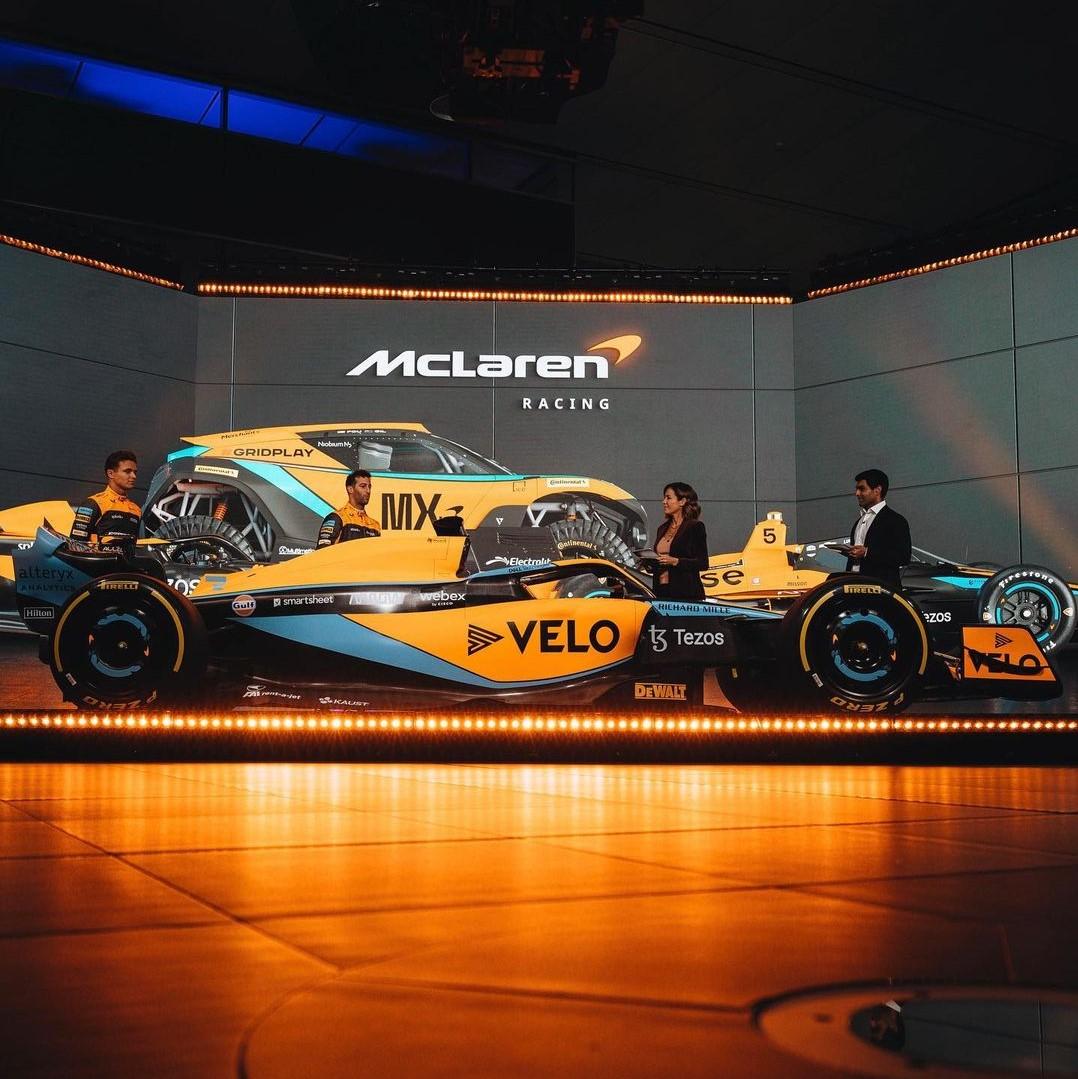McLaren MCL36A Formula 1 2022 car.

CHASSIS
| Monocoque | Carbon fibre composite, incorporating driver controls and fuel cell | |
| Safety structures | Cockpit survival cell incorporating impact resistant construction and anti-penetration panels, front impact structure, prescribed side impact structures, integrated rear impact structure, front and rear roll structures, Halo secondary roll structure, driver headrest protection and safety seat | |
| Bodywork | Carbon fibre composite, including engine cover, sidepods, floor, nose, front wing and rear wing with driver-operated drag reduction system | |
| Front suspension | Carbon fibre / steel suspension legs, suspension elements operating inboard torsion bar and damper system | |
| Rear suspension | Carbon fibre wishbone and pushrod suspension elements operating inboard torsion bar and damper system | |
| Weight | Overall vehicle weight 795 kg (including driver, excluding fuel) | |
| Weight distribution between 44.5% and 46.0% on front axle | ||
| Electronics | McLaren Applied. Including chassis control, power unit control, data acquisition, sensors, data analysis | |
| Instruments | McLaren Applied steering wheel display | |
| Brake system | 6 piston brake calipers with front / rear master cylinders | |
| ‘Brake by wire’ rear brake control system | ||
| Carbon-carbon ventilated discs and pads | ||
| Steering | Power-assisted rack and pinion | |
| Tyres | Pirelli P Zero F1 | |
| Race wheels | BBS Standardised Design 18” Magnesium Wheels' | |
| Paint | AkzoNobel Sikkens products | |
| Cooling systems | Charge air, engine oil, gearbox oil, hydraulic oil, water, and ERS cooling systems | |
| Advanced manufacturing | Stratasys 3D Printing & Additive Manufacturing Mazak Advanced Technology Solutions |
POWER UNIT
| Power unit type | Mercedes-AMG F1 M13 E Performance | |
| Minimum weight | 150 kg | |
| Primary PU components | Internal Combustion Engine (ICE) | |
| Motor Generator Unit – Kinetic (MGU-K) | ||
| Motor Generator Unit – Heat (MGU-H) | ||
| Turbocharger (TC) | ||
| Energy Store (ES) | ||
| Control Electronics (CE) |
INTERNAL COMBUSTION ENGINE
| Capacity | 1.6 litres | |
| Cylinders | Six | |
| Bank angle | 90-degree vee angle | |
| No of valves | 24 | |
| Max speed | 15,000 rpm | |
| Max fuel flow rate | 100 kg/hour (above 10,500 rpm) | |
| Fuel injection | High-pressure direct injection (max 500 bar, one injector/cylinder) | |
| Pressure charging | Single-stage compressor and exhaust turbine, on a common shaft | |
| Max rpm Exhaust Turbine 125,000rpm |
ENERGY RECOVERY SYSTEM
| Architecture | Integrated Hybrid energy recovery via Motor Generator Units | |
| Crankshaft coupled electrical MGU-K | ||
| Turbocharger coupled electrical MGU-H | ||
| Energy store | Lithium-Ion battery, minimum 20 kg regulation weight | |
| Maximum energy storage, 4 MJ per lap | ||
| MGU-K | Maximum speed, 50,000 rpm | |
| Maximum power, 120 kW | ||
| Maximum energy recovery, 2 MJ per lap | ||
| Maximum energy deployment, 4 MJ per lap | ||
| MGU-H | Maximum speed 125,000 rpm | |
| Maximum power, unlimited | ||
| Maximum energy recovery, unlimited | ||
| Maximum energy deployment, unlimited |
TRANSMISSION
| Gearbox | Carbon fibre composite gearbox casing, longitudinally mounted charge gear cluster | |
| Gear ratios | Eight forward and one reverse | |
| Gear selection | Electro-hydraulically operated seamless shift | |
| Differential | Limited slip friction clutch epicylic | |
| Clutch | Electro-hydraulically operated, carbon multi-plate |
